Abstract
Oxygen consumption and heat balance have been studied in 42 clothed babies under varied environmental temperature conditions. The information obtained has made it possible to compare the thermal environment provided by an incubator with that provided by an ordinary nursery cot. Some of the merits of cots and incubators are contrasted.
Resistance to heat loss in a naked newborn baby lying on a mattress in a moderately humid draught-free room is approximately 1 `clo' unit. Provision of a vest, napkin, and long nightdress increases this resistance to about 2·3 units, while wrapping the clothed baby in a flannelette sheet and covering it with 2 layers of cotton blanket increases the total resistance to 2·9 clo units.
A draught-free environment of 24 °C. (75 °F.) is necessary to provide completely neutral thermal conditions for most cot-nursed babies insulated against heat loss with clothes and blankets in the first month of life, while a room temperature of up to 29 °C. (85 °F.) may be necessary to ensure comparable conditions for a baby weighing less than 1½ kg. during much of the first week of life.
Full text
PDF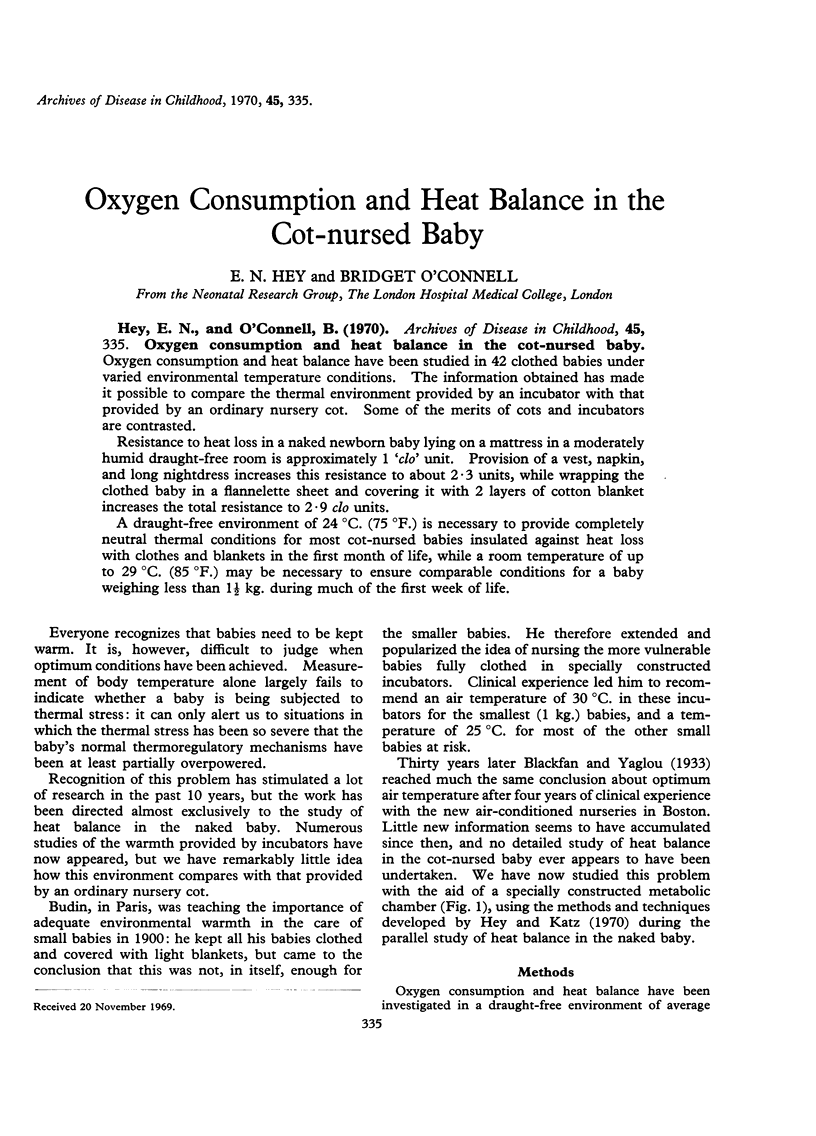
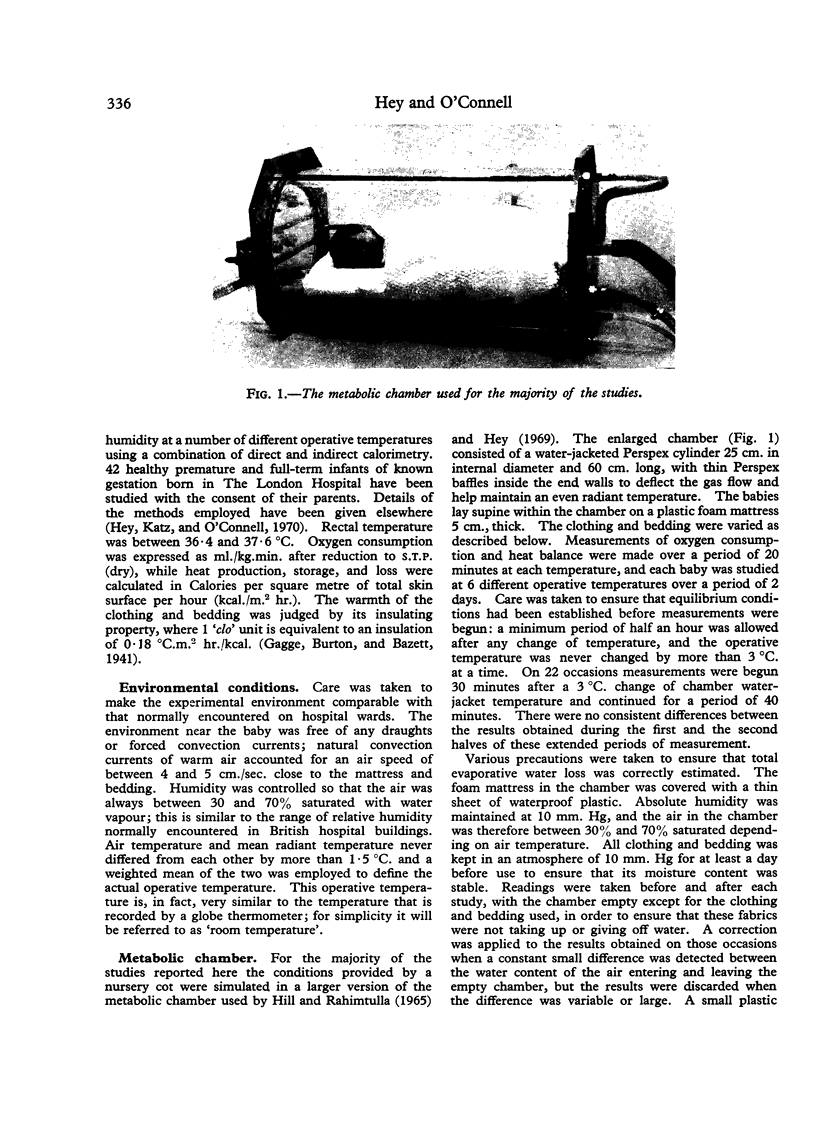

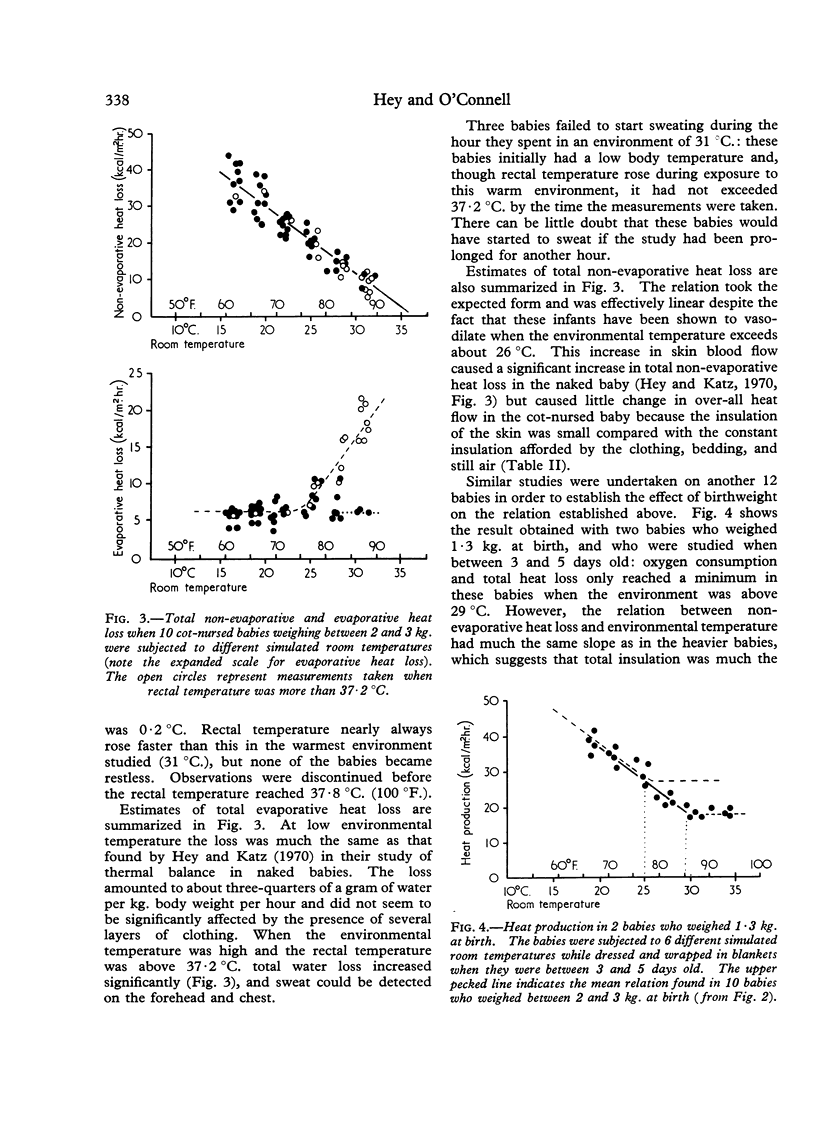
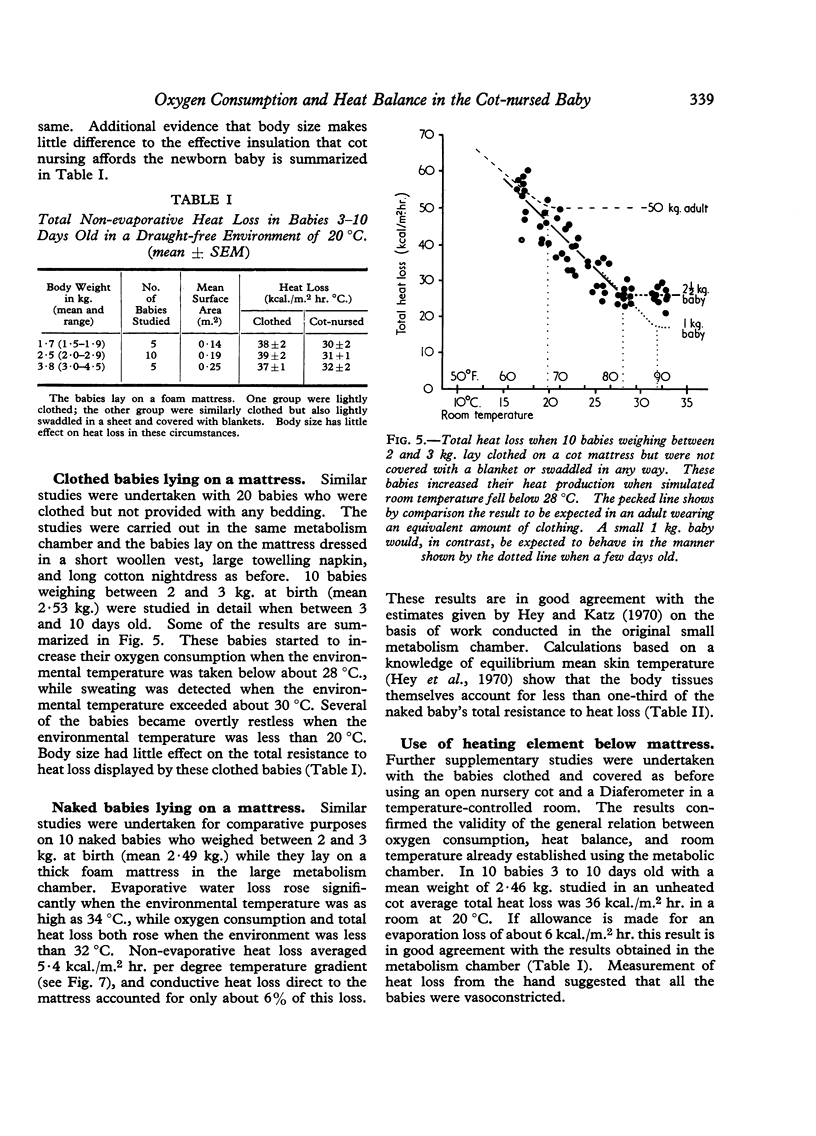
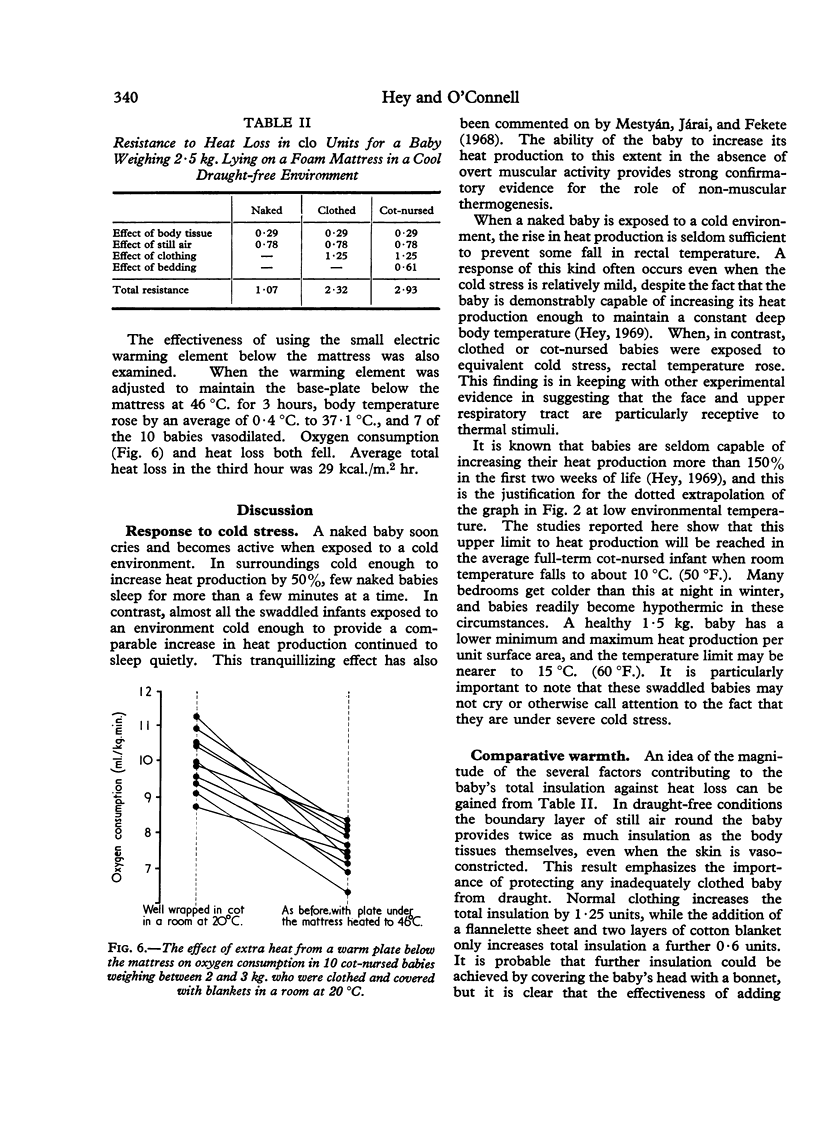
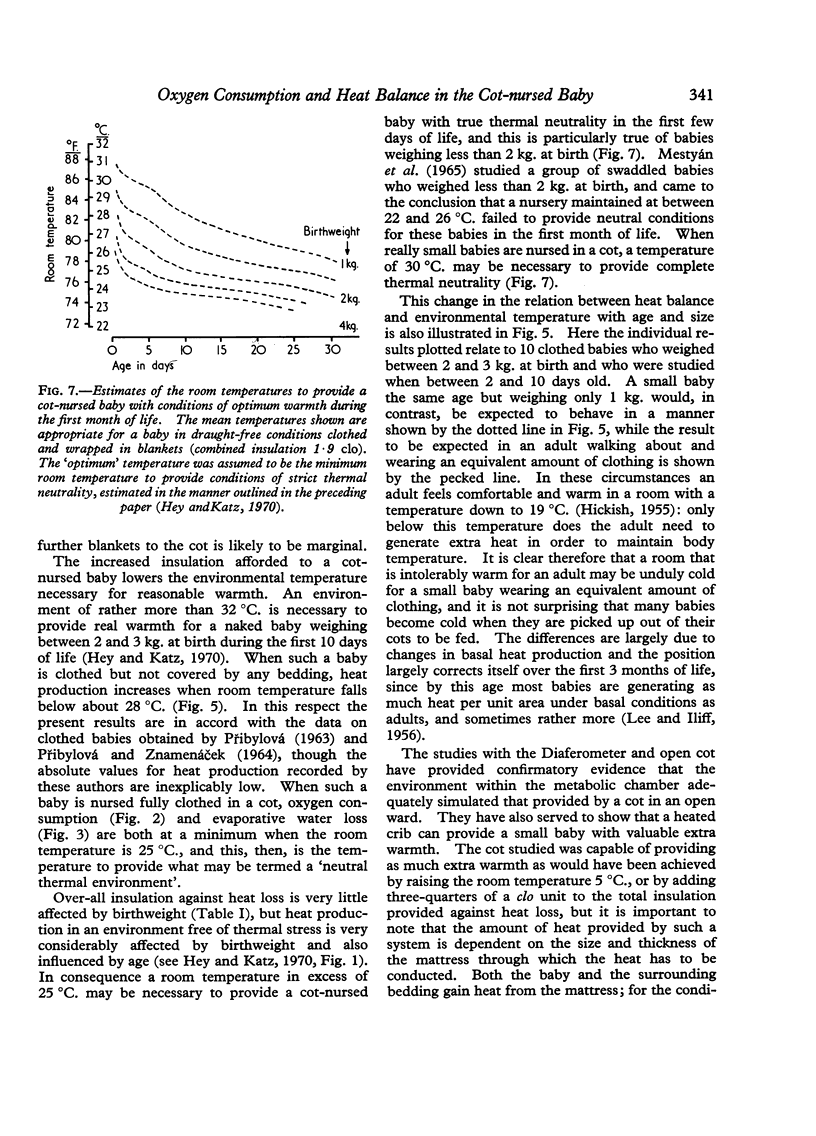
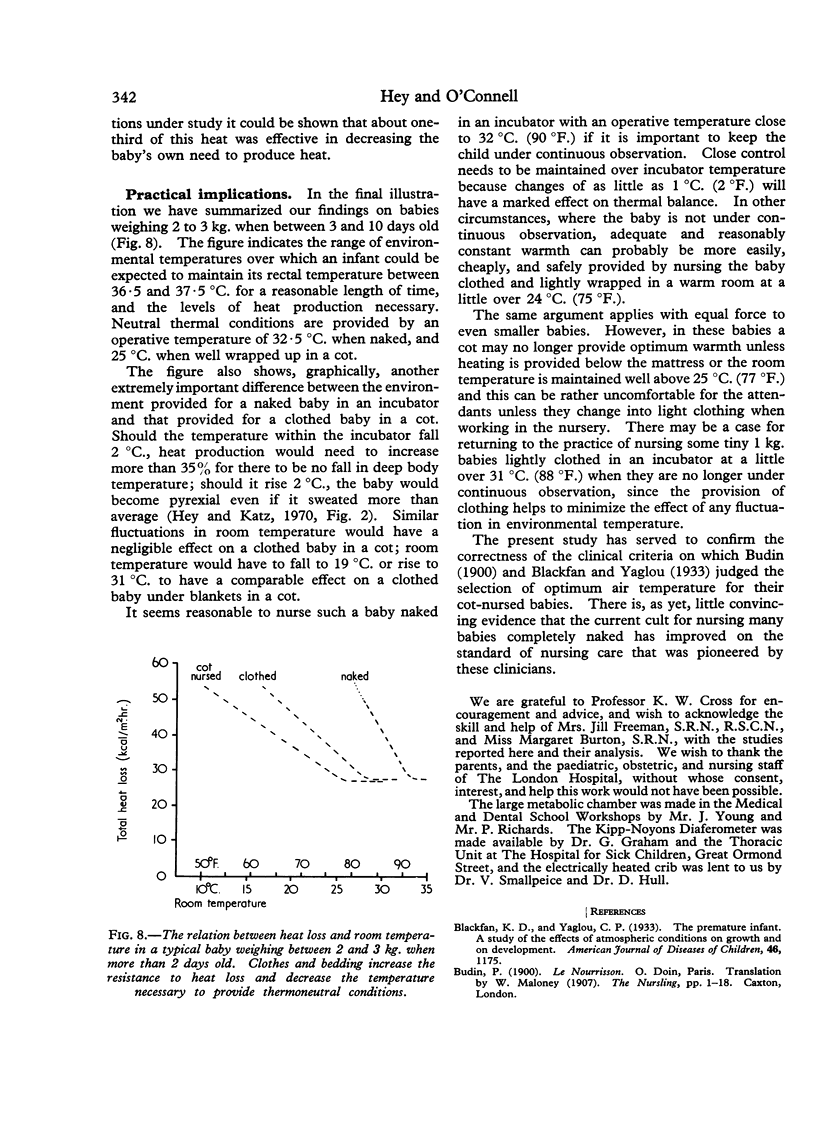
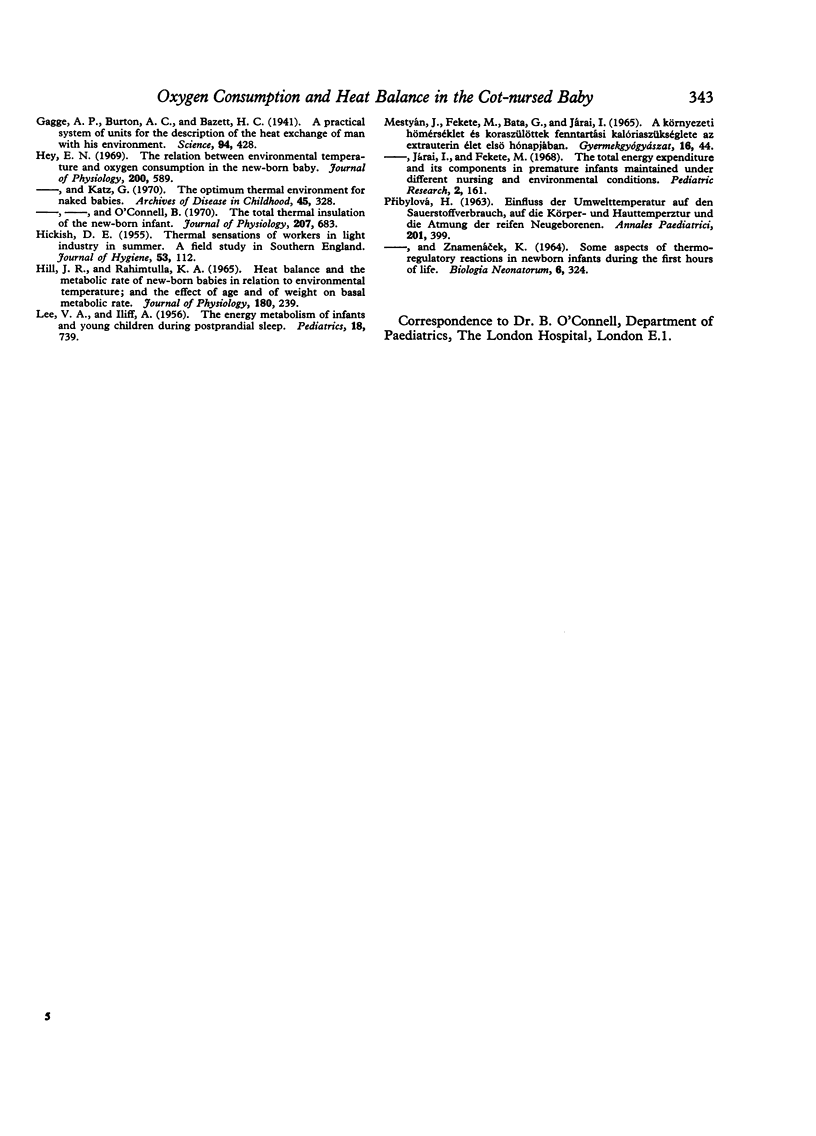
Images in this article
Selected References
These references are in PubMed. This may not be the complete list of references from this article.
- Gagge A. P., Burton A. C., Bazett H. C. A PRACTICAL SYSTEM OF UNITS FOR THE DESCRIPTION OF THE HEAT EXCHANGE OF MAN WITH HIS ENVIRONMENT. Science. 1941 Nov 7;94(2445):428–430. doi: 10.1126/science.94.2445.428. [DOI] [PubMed] [Google Scholar]
- HICKISH D. E. Thermal sensations of workers in light industry in summer; a field study in southern England. J Hyg (Lond) 1955 Mar;53(1):112–123. doi: 10.1017/s0022172400000565. [DOI] [PMC free article] [PubMed] [Google Scholar]
- Hey E. N., Katz G., O'Connell B. The total thermal insulation of the new-born baby. J Physiol. 1970 May;207(3):683–698. doi: 10.1113/jphysiol.1970.sp009088. [DOI] [PMC free article] [PubMed] [Google Scholar]
- Hey E. N., Katz G. The optimum thermal environment for naked babies. Arch Dis Child. 1970 Jun;45(241):328–334. doi: 10.1136/adc.45.241.328. [DOI] [PMC free article] [PubMed] [Google Scholar]
- Hey E. N. The relation between environmental temperature and oxygen consumption in the new-born baby. J Physiol. 1969 Feb;200(3):589–603. doi: 10.1113/jphysiol.1969.sp008710. [DOI] [PMC free article] [PubMed] [Google Scholar]
- Hill J. R., Rahimtulla K. A. Heat balance and the metabolic rate of new-born babies in relation to environmental temperature; and the effect of age and of weight on basal metabolic rate. J Physiol. 1965 Sep;180(2):239–265. doi: 10.1113/jphysiol.1965.sp007701. [DOI] [PMC free article] [PubMed] [Google Scholar]
- ILIFF A., LEE V. A. The energy metabolism of infants and young children during postprandial sleep. Pediatrics. 1956 Nov;18(5):739–749. [PubMed] [Google Scholar]
- Mestyán J., Járai I., Fekete M. The total energy expdenditure and its components in premature infants maintained under different nursing and environmental conditions. Pediatr Res. 1968 May;2(3):161–171. doi: 10.1203/00006450-196805000-00002. [DOI] [PubMed] [Google Scholar]
- PRIBYLOVA H. EINFLUSS DER UMWELTTEMPERATUR AUF DEN SAUERSTOFFVERBRAUCH, AUF DIE KOERPER- UND HAUTTEMPERATUR UND DIE ATMUNG DER REIFEN NEUGEBORENEN. Ann Paediatr. 1963;201:399–409. [PubMed] [Google Scholar]
- PRIBYLOVA H., ZNAMENACEK K. SOME ASPECTS OF THERMOREGULATORY REACTIONS IN NEWBORN INFANTS DURING THE FIRST HOURS OF LIFE. Biol Neonat. 1964;6:324–339. [PubMed] [Google Scholar]



